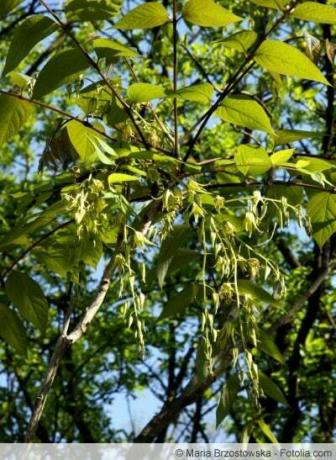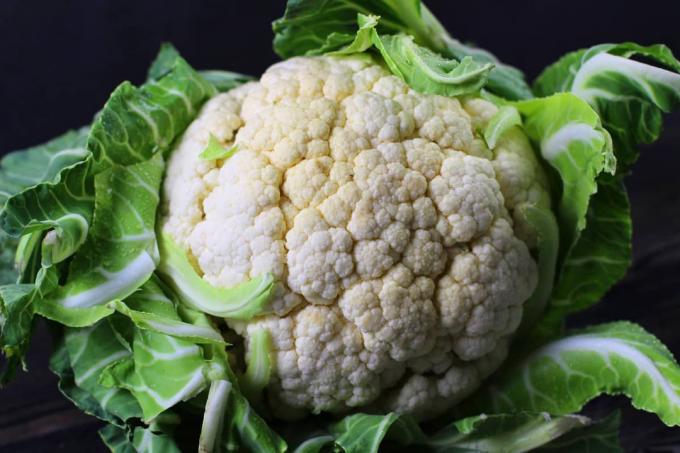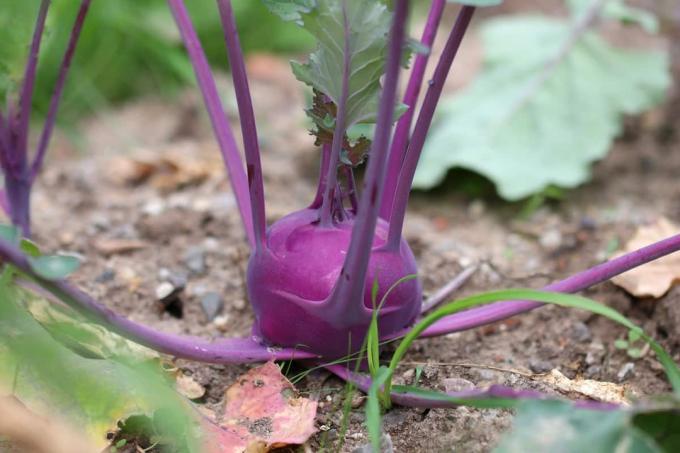

Table of contents
- Location
- substrate
- sowing and planting
- Pour
- Fertilize
- harvest
- wintering
- waste
- tub culture
- Conclusion
Despite the exotic origin and appearance of the shrub, the cultivation of the blue pod is surprisingly easy and requires little care. However, extremely rewarding. From the color of the fruit and the delicate taste to the impressive size of the pinnate leaves, the cucumber bush is more than just an eye-catcher. In addition, it can be cultivated outdoors just as well as in the conservatory or living room and steals the show from many other plants.
Location
The blue pod comes from the wooded regions of western China and is originally used to sheltered locations. It also needs sun to partial shade and wind protection in this country. The optimal location is therefore a sheltered location, for example a warm corner near the house. Neither should the blazing midday sun hit it, nor cold or strong wind. This protection is particularly important in winter. Anyone who decides to plant directly outdoors must also take the space required into account. Without pruning, the cucumber bush can reach up to five meters in height and four meters in width. As a result, the blue pod overshadows other plants with ease. With about a quarter meter per year, however, it takes a while for this to happen. Nevertheless, sufficient distance to the house and walls should be planned, or the blue pod should first be grown in a bucket.
substrate
Fresh to moist, nutrient-rich or lean, alkaline to acidic: the substrate for the blue pepper and its cultivation is unproblematic. Deep garden soil that is well drained is optimal. However, the substrate should not tend to compaction and experience has shown that poor soil is the better choice for the blue pod shrub. Garden soil should therefore be loosened up with sand or gravel if possible. Heavy doses of fertilizer of any kind should be avoided. If the soil is heavily used, some mulch or rotted compost may be worked in as preparation. The prerequisite is then, however, that the nutrient supply is evenly distributed at least for a few weeks can distribute and set in the ground before the cucumber bush is planted or sowing he follows.
sowing and planting
The blue pepper can be propagated both by seed and by cuttings. Accordingly, it is possible to start growing the cucumber bush in different ways. If you don't want to wait too long for the first fruits, you can use young plants that have been brought forward. For cultivation from seeds, the following procedure must be followed:
- The seeds of the blue pod need a cold period to germinate. The so-called stratification is achieved by storing the seed for two to three months at around 5°C. For example in the fridge. Alternatively, the seeds can be planted in soil and "chilled" in it.
- Soaked in lukewarm water, the seeds are prepared for germination for a day. In a planter, they are lightly covered with potting soil. The substrate is moistened, but should not be waterlogged.
- For a quick and yet strong budding, the container is brought to a bright and warm location. 20 to 25 °C are necessary for germination to begin.
- A cover to keep moist is not necessary. However, the potting soil should be watered regularly, avoiding waterlogging.
When sowing the blue pepper, a mixture of commercially available growing substrate with sand or perlite is recommended as growing soil. When propagating via cuttings, on the other hand, the soil described above can be used directly. Here, too, a few points should be noted:
- If you start cultivating the blue pepper with cuttings, you should obtain them in spring or early summer and then plant them quickly.
- The cuttings, which are at least ten centimeters long, are powdered with rooting aid at the cutting point and then placed a few centimeters deep in the ground. They should stop on their own.
- The substrate is well moistened and then kept moist, but should never be wet.
- A warm and bright place that is protected from wind and late frosts should be chosen as the location for the cuttings and young plants to be rooted.
It usually only takes a few weeks for the cuttings to take root. Successful rooting can be recognized by the fact that the plant shoots can no longer be pulled out of the ground or new leaves are formed.
Tip:
Of course, the cultivation of the cucumber bush - as already mentioned - can also begin with early young plants. In fact, it's the best way to get a quick yield. The plants are planted in early summer, when late sub-zero temperatures are no longer to be expected.
Pour
Whether planted freely in the garden or in a tub, the blue pod shrub needs a reasonably constant level of moisture. However, he must never be drowned. The plant tolerates drought much better than waterlogging. It can therefore stand drier from time to time, but it is better to do without a cachepot or saucer outdoors. For this reason, it also makes sense to treat it to a drainage layer when growing in tubs. This can consist of potsherds or coarse gravel and protects the roots from rotting if there is too much water.
Fertilize
As already mentioned, the bluebean shrub thrives better in poor soil. Of course, it cannot do without nutrients entirely. Long-term fertilizers for vegetable plants should therefore be given in small doses from the second year onwards. It is then fertilized when the shrub is already showing the first new shoots, i.e. in late spring or early summer. A product for six months should be preferred, as the amount gradually decreases and does not need to be re-fertilized.
harvest
In summer, the blue pod develops fruits whose skins gradually turn blue. These are not only reminiscent of beans in appearance, but are also harvested and peeled in the same way - but can be eaten raw. The right time has come when the shells have turned cobalt blue. So in late summer.
Tip:
If you can't put all the blue pods on your menu, you can also use them fresh or dried as decoration.
wintering
The blue pod bush tolerates frost, but only down to -10 °C. The most important protection in winter is still the right location. Cold wind and blazing winter sun should not hit the blue pepper if possible. Additional insulation is also useful. Since the plant sheds its leaves in autumn anyway, the cucumber bush can be completely wrapped in garden fleece or blankets. Piling up straw, brushwood or mulch protects the roots.
If the blue pod is cultivated in a bucket or if the plants are very young, overwintering outdoors is not recommended. It is then better to give the plant a frost-free winter quarters. Temperatures between five and ten degrees are ideal here. Incidentally, caution is still required in the spring. The cucumber bush sprouts quite early, but is very sensitive to late frosts. In the event of a sudden drop in temperature, the plant should be protected again or brought indoors.
Tip:
Even in winter, the blue pepper must not dry out and should therefore be watered in sips if necessary.
waste
A blending of the blue pod is not absolutely necessary, but it can be done if necessary. If the plant gets too big, careful pruning is advised, and frozen or otherwise damaged shoots may be cut off.
Ideally, pruning should be done after the last frost.
tub culture
Since the blue pod is not particularly frost-resistant, cultivation in a bucket is recommended, at least during the first few years. This makes hibernation much easier. In addition, the cucumber bush can also serve as a houseplant due to its decorative appearance. If you are still aiming for a high-yield cultivation of the blue pod, you should bring the plant outside when it flowers in May or June. Here, insects ensure that the flowers are fertilized and that the slightly sweet fruits can develop from them. When growing in tubs, the greater water requirement should be taken into account. At the same time, there is a greater risk of waterlogging, so no water should be allowed to remain in the planter or saucer.
Conclusion
The blue pod is an exotic enrichment for the garden, balcony or the living room and the menu. Not much care is required for this, but the right knowledge about the culture and cultivation of the cucumber bush must be available.
 garden editorial
garden editorial I write about everything that interests me in my garden.
Learn more about vegetables

Mixed culture: 9 good neighbors of Swiss chard
The cultivation of Swiss chard in the home garden is uncomplicated and the harvest rewards are considerable. Varieties with colorful stems are also real eye-catchers in the bed. Carefully selected neighboring plants contribute to healthy growth.

Mixed culture: 17 good neighbors of beetroot
Because of its uncomplicated nature, beetroot is often cultivated. To optimize the health and taste of root vegetables, it is advisable to plant good neighbors. These have a positive effect on growth and protect against pests and fungi.

12 good neighbors of cucumbers | mixed culture
Cucumbers are popular vegetables for mixed crops with other crops. Root vegetables are just as suitable as lettuce as plant neighbors. Plantings with kitchen herbs are attractive because they enrich the garden and kitchen. Flowering ornamental plants also improve growth.

10 good neighbors for onions | mixed culture
Good neighbors for onions or a beneficial mixed culture is not only natural, but It also reduces the maintenance effort, can keep pests away and the risk of disease to reduce. You can find out which plants are suitable here.

Mixed culture: 14 good neighbors of cauliflower
Cauliflower, also known as cheese or cauliflower, is a cultivated form of cabbage. It can be prepared in a variety of ways and can be eaten raw or cooked. Cultivation is not unproblematic, because cauliflower is very demanding.

Mixed culture: 11 good neighbors of kohlrabi
The kohlrabi likes to root next to many other plants, so a mixed culture with it is easy to implement. Not only does it grow splendidly and healthily. Even the scarce space in a house garden can be used optimally. Which are his favourites?
